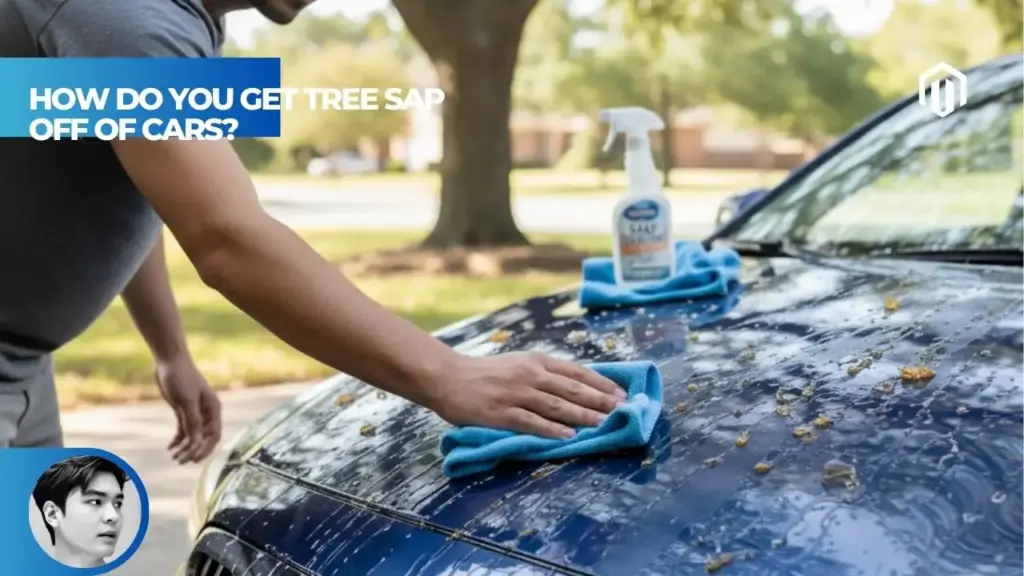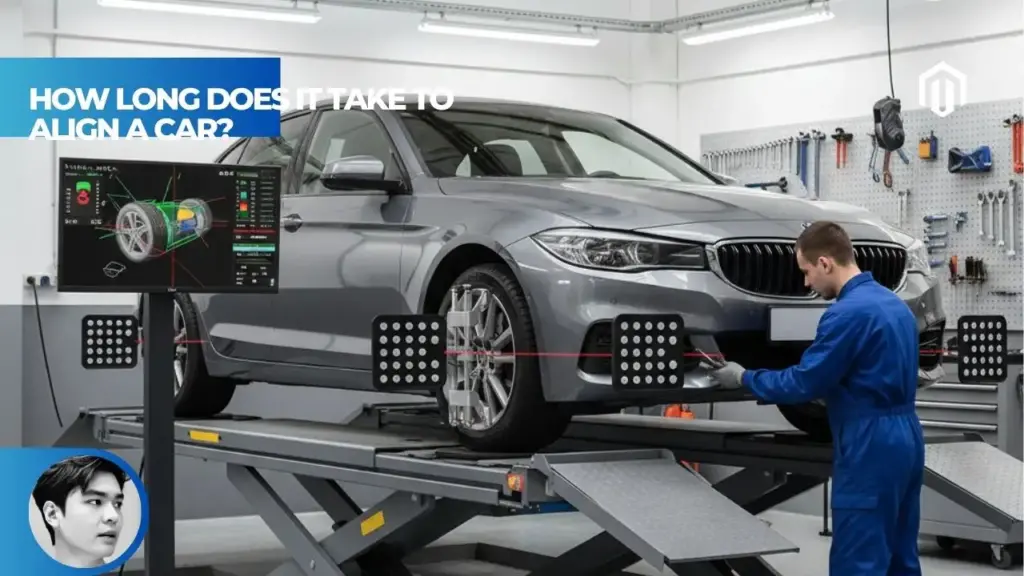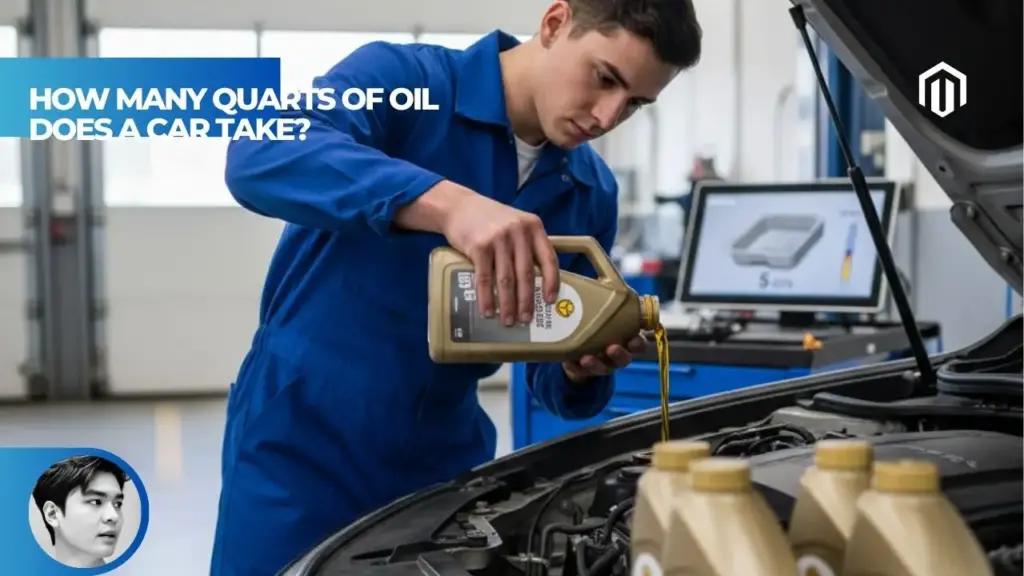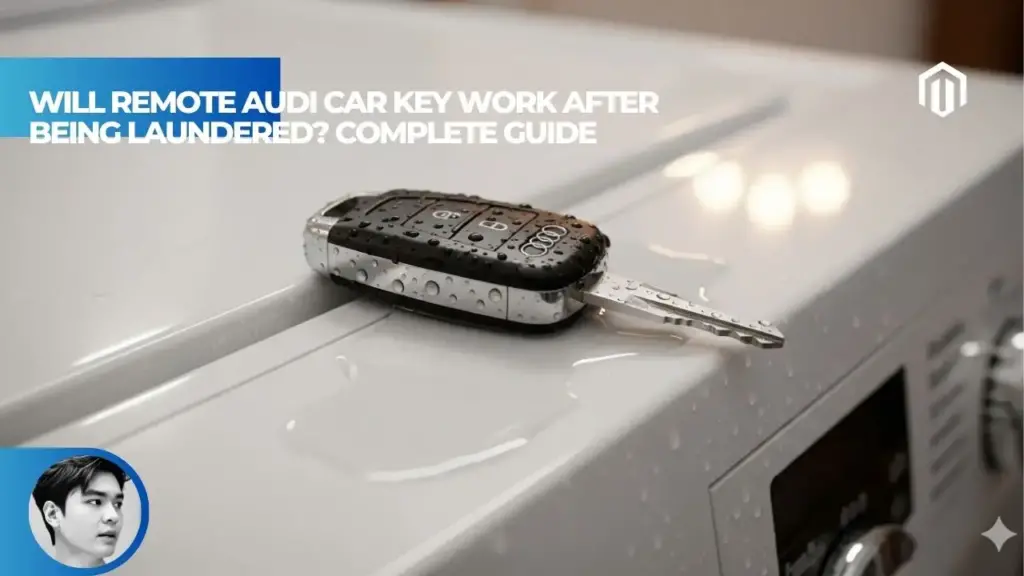You may also like:
- 【Explained】How Long Does It Take to Replace a Car Battery? (A Full Breakdown)
- 【Explained】How Long Does It Really Take to Charge a Car Battery?
- 【Explained】Can You Jump Start a Car in the Rain? (A Step-by-Step Guide)
- 【Explained】Why Does My Audi Car Key’s Red Light Blink But the Car Does Not Open? (5 Fixes)
- 【Explained】How Many Square Feet Is a 2 Car Garage? (A Complete Guide)
A car can safely sit for two weeks without being driven before problems begin developing. After 14 days of inactivity, battery drain, tire damage, and fluid degradation start compromising your vehicle’s health, potentially leading to thousands in repair costs.
When life circumstances force you to park your vehicle for extended periods—whether due to remote work, military deployment, or seasonal storage—understanding the risks of car inactivity becomes crucial. According to Autvex automotive experts, modern vehicles are particularly susceptible to storage-related damage due to their complex electronic systems and sensitive components.

Vehicle Inactivity Effects: Understanding the Two-Week Threshold
How Long Can You Let a Car Sit Without Driving?
The two-week mark represents a critical turning point for idle vehicles. While older, simpler cars might tolerate longer periods of inactivity, today’s computerized vehicles begin experiencing issues after just 14 days of sitting still[1].
Your vehicle’s tolerance for inactivity depends on several factors. Newer models with advanced electronics drain batteries faster, while climate conditions significantly impact storage duration. According to AAA guidelines, vehicles stored in extreme temperatures face accelerated deterioration[2].
The age and condition of your car also matter. A well-maintained 2025 model might survive three weeks without issues, while a 10-year-old vehicle with original components could struggle after just 10 days.
What Happens If a Car Is Not Driven for a Long Time?
Extended inactivity triggers a cascade of deterioration across multiple vehicle systems. The battery loses charge progressively, fluids separate and degrade, and mechanical components seize from lack of lubrication.
| Storage Duration | Primary Issues | Estimated Repair Costs |
|---|---|---|
| 2-4 weeks | Battery drain, tire pressure loss | $100-300 |
| 1-3 months | Flat spots, brake rust, fuel degradation | $400-800 |
| 3-6 months | Seized components, pest damage, major corrosion | $1,000-3,000 |
| 6+ months | Complete system failure, extensive restoration needed | $3,000+ |
Modern vehicles suffer particularly severe consequences. Electronic control modules lose programming when batteries die completely, requiring expensive dealership reprogramming that can exceed $500[1].
Critical Timeline for Modern Vehicle Systems
Understanding the deterioration timeline helps prevent costly damage. Each system fails at different rates, creating a complex matrix of maintenance requirements.
- Week 1-2: Battery voltage begins dropping. Tire pressure decreases 1-2 PSI per month. Surface rust forms on brake rotors in humid conditions.
- Week 3-4: Battery struggles to start the engine. Tire sidewalls begin developing micro-cracks. Fuel starts oxidizing, especially ethanol blends.
- Month 2-3: Battery requires jump-starting or replacement. Visible flat spots form on tires. Brake calipers begin binding. Rodents discover your vehicle as potential shelter.
Car Battery Drain and Parasitic Draw Problems
Understanding Parasitic Drain in Modern Vehicles
Every modern vehicle experiences parasitic drain—the continuous power consumption by electronic systems when the car is off. Clock displays, alarm systems, keyless entry modules, and engine computers all draw power constantly[3].
Normal parasitic draw ranges from 50-85 milliamps in newer vehicles. However, a faulty component can increase this to 200+ milliamps, draining your battery within days. The 2025 models with advanced telematics systems are particularly vulnerable to excessive drain[3].
Testing for abnormal parasitic drain requires a digital multimeter. Connect it between the negative battery terminal and cable, then measure the current draw. Readings above 100 milliamps indicate problematic drain requiring diagnosis.
Battery Trickle Charger/Maintainer Solutions
Battery maintainers represent the most effective solution for preventing discharge during storage. Unlike standard chargers, maintainers provide intelligent charging that prevents overcharging while maintaining optimal voltage.
Smart maintainers monitor battery voltage continuously, activating only when needed. Quality units from brands like CTEK or Battery Tender Plus cost $30-75 but prevent $150-300 battery replacements[2].
Installation takes minutes: connect the red lead to the positive terminal, black to negative, then plug into a standard outlet. For electric vehicles like the BMW i5, specialized high-voltage battery management systems require different approaches.
Signs of Battery Failure from Inactivity
Recognizing early warning signs prevents complete battery failure and potential alternator damage. Slow engine cranking indicates declining battery capacity, while dim headlights suggest voltage drops below 12.4 volts.
Dashboard warning lights often illuminate when battery voltage falls. Modern vehicles display specific battery alerts, though older models might show generic electrical warnings. If jump-starting becomes necessary after just two weeks of storage, battery replacement is likely needed.
Sulfation—the crystallization of lead sulfate on battery plates—occurs rapidly in discharged batteries. This irreversible damage reduces capacity permanently, explaining why deeply discharged batteries never fully recover.
Tire Flat Spots and Pressure Management
How Tire Flat Spots Develop During Storage
Tire flat spots form when vehicle weight compresses the same tire section for extended periods. The rubber compounds deform, creating a flat section that causes vibrations when driving resumes.
Temperature significantly impacts flat spot formation. Cold weather makes rubber less flexible, increasing permanent deformation risk. Summer heat accelerates chemical breakdown in tire compounds, weakening structural integrity.
Modern high-performance tires are particularly susceptible due to softer compounds designed for grip rather than durability. Run-flat tires face even greater risks due to reinforced sidewalls that resist returning to round shape.
Prevention Methods for Long-Term Parking
Preventing flat spots requires proactive measures starting before storage begins. Inflate tires to maximum sidewall pressure—typically 5-10 PSI above normal driving pressure—to minimize contact patch deformation.
| Prevention Method | Effectiveness | Cost | Effort Level |
|---|---|---|---|
| Over-inflation | Moderate | Free | Low |
| Tire cradles/FlatStoppers | High | $100-200 | Medium |
| Regular rotation (bi-weekly) | High | Free | High |
| Jack stands (complete lift) | Excellent | $50-150 | High |
Moving the vehicle every two weeks redistributes weight across different tire sections. Drive at least 10 minutes to warm tires and restore flexibility. Simply rolling forward a few feet isn’t sufficient.
Temperature Impact on Tire Degradation
Extreme temperatures accelerate tire deterioration exponentially. Tires lose approximately 1 PSI for every 10°F temperature drop, potentially causing dangerous under-inflation during winter storage[4].
UV exposure causes sidewall cracking and compound degradation. Even indoor storage isn’t completely safe—fluorescent lighting produces UV rays that damage rubber over time. Tire covers provide essential protection for long-term storage.
Ozone, present in urban environments and near electric motors, attacks rubber molecules. This explains why tires stored near furnaces or workshop equipment deteriorate faster than those in temperature-controlled spaces.
Fluid Degradation in Inactive Vehicles
Engine Oil Breakdown Timeline
Engine oil degradation continues regardless of mileage. Oxidation, moisture absorption, and additive depletion occur constantly, reducing lubricating properties within months.
Fresh synthetic oil resists breakdown better than conventional oil, maintaining viscosity for 6-12 months in storage. However, moisture condensation dilutes oil, creating acids that corrode internal components.
Starting engines briefly without driving actually accelerates contamination. Short runs don’t reach operating temperature, preventing moisture evaporation and increasing condensation. Autvex recommends changing oil before storage and again before returning to regular use.
Coolant and Brake Fluid Deterioration
Coolant develops acidity over time, even when unused. The pH drops from optimal 8.5-10.5 to corrosive levels below 7.0, attacking aluminum components, head gaskets, and water pump seals.
Brake fluid absorbs moisture through microscopic pores in rubber hoses—a process called hygroscopic absorption. After one year, brake fluid can contain 2-3% water, lowering boiling point from 400°F to 300°F and causing brake fade[5].
Power steering and transmission fluids face similar degradation. Automatic transmission fluid oxidizes, forming varnish deposits in valve bodies. These deposits cause shifting problems requiring expensive transmission service.
Fuel System Contamination Risks
Gasoline begins degrading after just 30 days, with ethanol-blended fuels deteriorating even faster. Phase separation occurs when ethanol absorbs moisture, creating a water-alcohol layer that damages fuel systems.
Fuel stabilizers extend gasoline life to 12-24 months by preventing oxidation and gum formation. Add stabilizer to a full tank, then run the engine 10 minutes to circulate treated fuel throughout the system. Popular brands like Sta-Bil or Sea Foam cost $10-20 per bottle[2].
Diesel fuel grows algae and bacteria in storage, creating sludge that clogs filters and injectors. Biocide additives prevent microbial growth, while anti-gel additives prevent waxing in cold temperatures.

Engine Rust/Corrosion from Extended Storage
Internal Component Moisture Buildup
Moisture accumulation inside engines causes severe damage during storage. Temperature cycling creates condensation on cylinder walls, camshafts, and valve stems—areas normally protected by oil film during operation.
Humidity enters through the air intake and crankcase ventilation system. Once inside, water vapor condenses on cool metal surfaces, initiating rust formation within days. This explains why coastal and humid climates require extra storage precautions.
Fogging oil, sprayed into cylinders through spark plug holes, provides temporary corrosion protection. This technique, borrowed from marine storage practices, costs under $15 but prevents thousands in engine damage.
Exhaust System Corrosion Problems
Exhaust systems suffer particularly severe corrosion during storage. Moisture trapped inside pipes and mufflers can’t evaporate without hot exhaust gases, creating ideal conditions for rust formation.
Stainless steel exhausts resist corrosion better than standard steel but aren’t immune. Catalytic converters face unique risks—moisture damages the ceramic substrate, reducing efficiency and potentially requiring $1,000+ replacement[1].
Short idle sessions worsen exhaust corrosion by creating condensation without sufficient heat for evaporation. Only sustained highway driving reaches temperatures necessary to eliminate moisture completely.
Prevention Through Proper Lubrication
Strategic lubrication before storage provides crucial protection against corrosion. Fresh oil coats internal components, while fogging oil protects combustion chambers and valves.
Apply white lithium grease to hood latches, door hinges, and trunk mechanisms. Spray silicone lubricant on weather stripping to prevent drying and cracking. These simple steps cost under $20 but prevent expensive repairs.
For high-performance vehicles, consider specialized storage oils containing enhanced corrosion inhibitors. These products, though costing 2-3 times standard oil, provide superior protection for valuable engines.
Brake Caliper Seizure/Rotor Rust Issues
How Brake Components Deteriorate
Brake systems deteriorate rapidly during storage, with visible rust appearing on rotors within 48 hours in humid conditions. This surface rust initially causes no damage but progressively pits rotor surfaces, creating vibration and reduced braking efficiency.
Brake calipers face more serious risks. Pistons can seize in their bores when corrosion develops around seals. Sliding pins bind from lack of movement, preventing proper caliper operation. These issues often require complete caliper replacement costing $300-500 per wheel[5].
Parking brakes cause additional problems when left engaged during storage. Cable mechanisms corrode and seize, while rear brake shoes can bond to drums. Many storage facilities recommend leaving parking brakes disengaged, using wheel chocks instead.
Safety Risks After Long-Term Storage
Attempting to drive immediately after storage creates serious safety hazards. Seized calipers cause uneven braking, potentially pulling vehicles into opposing traffic. Contaminated brake fluid boils under heavy braking, causing complete brake failure.
| Brake Issue | Warning Signs | Safety Risk Level |
|---|---|---|
| Surface rust | Grinding noise, vibration | Low |
| Seized caliper | Pulling to one side | High |
| Contaminated fluid | Spongy pedal | Critical |
| Bound parking brake | Rear wheels locked | High |
Professional inspection becomes mandatory after storage exceeding three months. Technicians check caliper operation, measure rotor thickness, and test brake fluid moisture content using specialized equipment.
Maintenance Before Reactivation
Proper brake system reactivation requires systematic inspection and testing. Begin with visual inspection for obvious damage, rust severity, and fluid leaks.
Pump the brake pedal several times before starting the engine, checking for proper resistance. Start the vehicle and test brakes at walking speed before entering traffic. Any grinding, pulling, or unusual pedal feel requires immediate professional attention.
Consider having complete vehicle inspection performed after extended storage. Many shops offer storage reactivation services including fluid changes, battery testing, and comprehensive safety checks.
Rodent/Pest Infestation Dangers
Common Entry Points and Nesting Areas
Vehicles provide ideal shelter for rodents seeking warmth and protection. Mice can squeeze through openings as small as a dime, entering through wheel wells, fresh air intakes, and exhaust pipes.
Common nesting locations include air filter boxes, behind dashboard insulation, inside spare tire wells, and within engine compartments near heat sources. Rodents particularly favor vehicles with soy-based wire insulation—a growing problem in 2020+ models[1].
Signs of infestation include droppings, shredded materials, unusual odors, and visible damage to wires or insulation. Early detection prevents extensive damage requiring professional cleaning and repairs.
Wiring Damage and Repair Costs
Rodent damage to automotive wiring creates expensive and dangerous problems. A single chewed wire harness can cost $500-1,500 to replace, while extensive damage might total a vehicle.
Modern vehicles with multiplexed wiring systems face particular vulnerability. One damaged circuit can affect multiple systems, causing cascading failures throughout the vehicle’s electronics. Insurance often covers rodent damage, but deductibles and rate increases offset benefits.
Soy-based wire insulation, introduced for environmental reasons, attracts rodents more than traditional petroleum-based materials. Some manufacturers face class-action lawsuits over this issue, though proving liability remains challenging.
Effective Deterrent Strategies
Preventing rodent infestation requires multiple defensive strategies. Physical barriers like steel wool in openings and wire mesh over air intakes provide first-line defense.
Chemical deterrents offer additional protection. Peppermint oil-soaked cotton balls, commercial rodent repellent sprays, and mothballs placed strategically around storage areas discourage nesting. Electronic ultrasonic devices claim effectiveness but show mixed real-world results[2].
Regular inspection during storage allows early intervention. Open the hood weekly, checking for signs of activity. Move the vehicle periodically—rodents avoid active vehicles and the movement disturbs established nests.
Long-Term Car Storage Best Practices
Fuel Stabilizer Application Guidelines
Proper fuel stabilization prevents expensive fuel system repairs after storage. Add stabilizer to a nearly empty tank, then fill completely with fresh gasoline to minimize air space and condensation potential.
Calculate stabilizer quantity based on tank capacity, not fuel amount. Most products treat 20-25 gallons per ounce, but concentration varies by brand. Over-treating won’t harm engines but wastes money—under-treating provides inadequate protection[2].
Run the engine 10-15 minutes after adding stabilizer, ensuring treated fuel reaches the injectors, fuel rail, and return lines. This prevents untreated fuel from gumming these critical components during storage.
Car Cover Protection Selection
Choosing appropriate car covers significantly impacts storage success. Breathable materials prevent moisture accumulation that causes mold and corrosion, while waterproof covers trap humidity and accelerate deterioration.
| Cover Type | Best For | Price Range | Pros | Cons |
|---|---|---|---|---|
| Basic cloth | Indoor only | $30-50 | Economical | Minimal protection |
| Multi-layer breathable | Indoor/outdoor | $100-200 | Balanced protection | Moderate cost |
| Custom fit | Show cars | $200-500 | Perfect fit | Expensive |
| Bubble/capsule | Long-term | $300-1000 | Ultimate protection | Space requirements |
For luxury vehicles, invest in custom-fitted covers that won’t scratch paint. Generic covers can flap in wind, causing paint damage worse than no cover at all.
Car Storage Tips for Different Durations
Storage strategies vary significantly based on duration. Short-term storage (2-4 weeks) requires minimal preparation—battery maintenance and tire pressure checks suffice.
Medium-term storage (1-6 months) demands comprehensive preparation including fluid changes, fuel stabilization, and pest prevention. Consider professional storage facilities offering climate control and security monitoring.
Long-term storage (6+ months) requires extensive measures. Remove batteries entirely, place vehicles on jack stands, and consider engine preservation techniques like cylinder fogging. Professional storage services specializing in collector cars provide optimal protection for valuable vehicles.
How to Start a Car After Sitting
Pre-Start Inspection Checklist
Systematic inspection before starting prevents catastrophic damage to engines that have been sitting. Never attempt immediate starting without completing these critical checks.
Begin with fluid levels—oil, coolant, brake, and power steering. Look for puddles indicating leaks that developed during storage. Check for rodent damage, particularly around engine wiring harnesses and air intake systems.
Inspect tires for flat spots, proper inflation, and sidewall cracks. Verify battery voltage using a multimeter—12.6 volts indicates full charge, while below 12.4 volts suggests charging is needed before starting attempts[3].
Safe Reactivation Procedures
Following proper reactivation procedures prevents damage and ensures safe operation. Remove any pest deterrents, wheel chocks, or battery maintainers before beginning.
Step-by-step reactivation:
- Reconnect battery if disconnected
- Turn key to “ON” without starting, allowing fuel pump to pressurize
- Check all warning lights illuminate then extinguish properly
- Start engine and let idle 30 seconds
- Listen for unusual noises indicating problems
- Check for leaks or smoke
- Test all controls before driving
Allow engines to warm thoroughly before driving. Cold engines suffer accelerated wear, particularly after extended storage when oil has drained from bearing surfaces.
Common Problems and Solutions
Storage-related problems often appear during reactivation. Understanding common issues enables quick resolution and prevents further damage.
| Problem | Likely Cause | Solution |
|---|---|---|
| Won’t start | Dead battery | Jump start or replace |
| Rough idle | Stale fuel | Add fresh gas and stabilizer |
| Brake grinding | Rust buildup | Drive gently to clean |
| Steering stiff | Low fluid/seized pump | Check levels, may need replacement |
| Check engine light | Evap system | Often clears after driving |
If problems persist after basic remedies, professional diagnosis becomes necessary. Modern vehicles require specialized scanners to read error codes and reset adaptive learning parameters.
EV Battery Storage Considerations
Optimal Charge Levels for Storage
Electric vehicle batteries require different storage strategies than traditional cars. Lithium-ion batteries degrade fastest at extreme charge levels—both full and empty accelerate capacity loss.
Manufacturers recommend storing EVs at 50-80% charge for optimal battery health. Tesla suggests 50% for extended storage, while Audi e-tron models recommend 60-80% depending on storage duration[6].
Setting charge limits through vehicle apps prevents overcharging during storage. Many EVs offer “storage mode” that automatically maintains optimal charge levels when plugged in continuously.
High-Voltage Battery Maintenance
High-voltage batteries require special consideration during storage. These batteries self-discharge approximately 1-3% monthly, potentially reaching damaging low levels during extended storage.
Temperature control becomes critical for EV battery longevity. Ideal storage temperature ranges from 50-77°F. Extreme cold reduces capacity temporarily, while heat causes permanent degradation. Climate-controlled storage provides best protection for expensive battery packs.
Monthly monitoring through manufacturer apps allows remote battery management. Some vehicles automatically condition batteries periodically, requiring continuous power connection during storage.
Temperature Management for EVs
EVs face unique temperature-related storage challenges. Battery thermal management systems protect against temperature extremes but consume power even when parked.
Cold weather storage requires maintaining minimum battery temperature to prevent damage. Most EVs won’t charge below 32°F without pre-conditioning, which consumes significant energy. Garage storage above freezing eliminates this concern.
Hot climate storage accelerates battery degradation exponentially. Parking in shade or climate-controlled facilities reduces cooling system load and extends battery life. Some manufacturers void warranties for vehicles stored above 120°F for extended periods.

Key Takeaways
- Two weeks marks the critical threshold where vehicle degradation begins—plan accordingly
- Battery maintainers cost $30-75 but prevent $150-300 replacements
- Fuel stabilizer ($10-20) prevents fuel system repairs costing $500+
- Monthly fluid changes during storage exceed mileage-based intervals
- Rodent damage affects 20% of stored vehicles—prevention is essential
- Professional storage inspection costs $100-200 but prevents thousands in repairs
- EVs require 50-80% charge and climate control for optimal storage
Next Steps
Implement a proactive storage strategy based on your specific timeline. For storage under one month, focus on battery maintenance and tire pressure. Longer storage demands comprehensive preparation including fluid changes, fuel stabilization, and pest prevention.
Schedule professional inspection with certified technicians before and after storage exceeding two months. Document all maintenance for warranty and insurance purposes. Consider professional storage facilities for vehicles valued over $30,000 or storage exceeding six months.
Invest in basic storage equipment—battery maintainer, fuel stabilizer, and quality car cover—totaling under $200. This minimal investment prevents repairs potentially exceeding $3,000. Create a storage checklist and maintenance schedule, setting smartphone reminders for bi-weekly vehicle checks.
For immediate action: Check your battery voltage today, add fuel stabilizer if planning storage, and research appropriate tire protection for your climate. Contact your insurance provider about storage coverage adjustments that could save hundreds annually while maintaining comprehensive protection.
Frequently Asked Questions
How long can you let a car sit without driving?
Experts including NHTSA recommend driving every two weeks minimum. Issues begin after 14 days of inactivity, with battery drain and tire flat spots developing first. Modern vehicles with advanced electronics are particularly vulnerable to problems after two weeks.
What happens if a car is not driven for a long time?
Extended inactivity causes dead batteries, flat tires, fluid degradation, rust formation, brake damage, and potential pest infestations requiring extensive repairs. Costs can range from $400 for minor issues to over $3,000 for severe damage after six months of storage.
How often should you drive a car that sits?
Drive for 15-30 minutes weekly to maintain battery charge and circulate fluids. Simple idling isn’t sufficient—reach operating temperature on highways. Autvex recommends 20-minute drives reaching 50+ mph to properly maintain all systems.
Will my car be okay if I don’t drive it for a month?
Newer cars may survive one month, but expect discharged batteries and rusting brakes. Use battery maintainers and proper storage preparation for safety. Without preparation, expect to need jump-starting and possible battery replacement costing $150-300.
Can a battery die from sitting two weeks?
Yes, especially in extreme temperatures or vehicles with high parasitic drain. Modern cars with multiple computers and alarm systems drain batteries faster than older models. A battery maintainer prevents this issue entirely.
What’s the best temperature for car storage?
Ideal storage temperature ranges from 50-70°F with low humidity. Extreme cold accelerates battery discharge while heat degrades fluids and rubber components faster. Climate-controlled storage provides optimal conditions but costs $100-300 monthly.
Should I start my car during storage?
Only if you can drive for 15+ minutes reaching operating temperature. Short idle sessions create condensation causing more harm than good. If unable to drive properly, leave the vehicle untouched rather than brief starting.
How much does professional car storage cost?
Basic outdoor storage costs $50-150 monthly while climate-controlled indoor storage ranges $200-500. Specialty collector car facilities with maintenance services can exceed $1,000 monthly but include battery maintenance and regular inspection.
Does car insurance cover storage damage?
Comprehensive coverage typically covers storage-related damage including rodent infestation, weather damage, and vandalism. However, mechanical failure from lack of maintenance isn’t covered. Consider reducing liability coverage while maintaining comprehensive during storage.
When should I use fuel stabilizer?
Add fuel stabilizer for any storage exceeding 30 days. Even two weeks of storage benefits from stabilizer in hot climates where fuel degrades faster. The $10-20 cost prevents fuel system cleaning costing $500 or more.
References
- UTI. (2021). What Is Parasitic Battery Drain and How To Test. Universal Technical Institute. https://www.uti.edu/blog/automotive/parasitic-battery-drain
- AAA. (2023). Best Practices for Long Term Car Storage (1-3 Years). AAA Auto Storage. https://www.aaaastorage.com/blog/long-term-car-storage-best-practices
- Autotrader. (2024). Why is my car’s battery draining and ways to prevent it. Autotrader UK. https://www.autotrader.co.uk/content/advice/why-is-my-car-battery-draining-ways-to-prevent-it
- NHTSA. (2020). Summer Safety Road Tips. National Highway Traffic Safety Administration. https://www.nhtsa.gov/press-releases/consumer-advisory-nhtsa-offers-summer-safety-road-tips
- Bureau of Automotive Repair. (2025). Maintenance and repairs. California BAR. https://www.bar.ca.gov/auto-repairs
- Northeast AAA. (2025). The Do’s and Don’ts of Winter Car Storage. AAA Magazine. https://magazine.northeast.aaa.com/daily/life/cars-trucks/winter-car-storage/

I am a senior automotive analyst at Autvex. Expert vehicle evaluations, in-depth reviews, and objective analysis helping readers make informed automotive decisions with years of industry experience.









